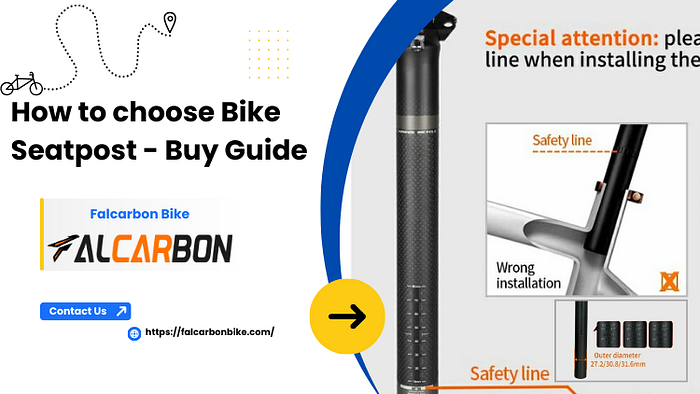How to Choose the Perfect Bike Seatpost for Comfort & Performance
As a cyclist, I’ve come to realize that comfort and efficiency are absolutely essential for every ride, whether I’m hitting the roads or taking on a tough trail. One key component that directly impacts both comfort and performance is the bike seatpost. It may seem like a simple part, but the right seatpost can really make a difference in how I feel during and after my rides.

The seatpost is the part that connects the saddle to the frame, allowing me to adjust the height for a more efficient pedaling position. Whether I’m racing on the road, tackling mountain trails, or going for long endurance rides, having the correct seatpost plays a crucial role in achieving that sweet spot for both comfort and control.
I’ve learned that when choosing a seatpost, it’s not just about picking something that fits; there are several factors to consider. First off, I need to think about the material — whether it’s aluminum, carbon fiber, or titanium — because each comes with its own balance of weight, stiffness, and comfort. For instance, I prefer carbon fiber when I’m on the road, as it absorbs vibrations and makes long rides much more comfortable. On the other hand, if I’m riding on more rugged trails, I might go for an aluminum or titanium post for the added durability and strength.
Then there’s the diameter. This is a big one since it determines whether the seatpost will actually fit into my bike frame. The common sizes are 27.2mm, 30.9mm, and 31.6mm, with each size suited to different types of bikes. Longer seatposts allow for greater height adjustments, but I also have to make sure it matches my bike’s frame and my riding needs.
What about the setback? I didn’t fully appreciate this until I experimented with different seatposts. A zero-offset post is perfect for more aggressive riding positions, especially when I’m pushing myself hard on races or climbs. But, if I’m out for a long-distance ride, a seatpost with some setback (say, 10–25mm) makes a huge difference in comfort by relieving pressure on my knees.
Material-wise, aluminum is the go-to for a lot of riders because it strikes a solid balance between cost and performance. But if I’m looking for something that’ll absorb shock and keep me comfortable during hours of riding, a carbon fiber seatpost is worth the investment. The trade-off is the price, of course, but for me, the extra comfort is often worth it. Titanium offers a great in-between, giving me the strength of aluminum and the shock absorption of carbon, but with the added bonus of being corrosion-resistant, which is perfect for those wet rides.
When I’m deciding on the right seatpost, I also keep in mind the type of bike I’m riding. Road bikes generally do well with rigid seatposts, while mountain bikes benefit from adjustable or cushioned ones to tackle rough terrains. If I’m riding off-road and need to quickly adjust my saddle height on the fly, a lift seatpost is a game-changer.
Lastly, I’ve found that proper maintenance of the seatpost is crucial. Regular cleaning, lubricating, and checking for wear can really extend its lifespan and keep me riding smoothly. A little extra care goes a long way in ensuring I get the most out of my ride.
Overall, choosing the right seatpost is all about balancing comfort, performance, and durability based on my specific needs. Whether it’s for long-distance endurance or technical mountain biking, the right seatpost is essential for maximizing my riding experience.
Read Also: How to choose Bike Seatpost.
Comments
Post a Comment